10 Common Mistakes People Make With Canned Corn
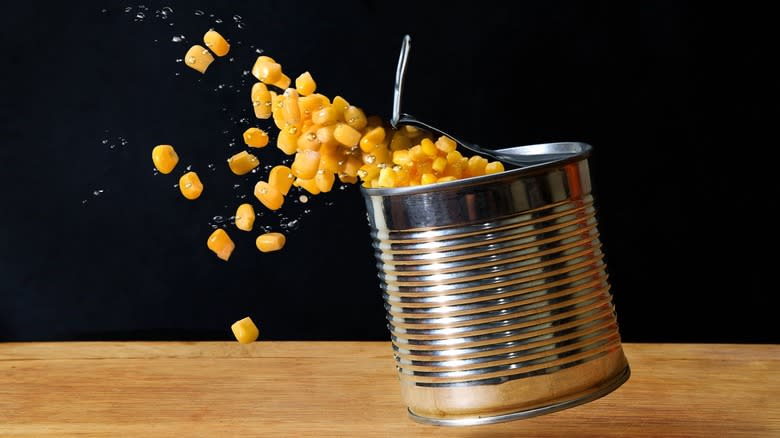
Canned corn is an amazing product to have in the pantry. Like most other canned items, it keeps for a long time, meaning you can purchase several cans when they're on sale, and then store them away to use in random recipes. Plus, just one can will save the day when you're having a veggie emergency and don't have any fresh corn in the fridge. When you need a side dish in a pinch, you can grab a can, pop it open, and you'll get tasty kernels within seconds -- all without having to cook.
Despite being such an easy and simple ingredient, canned corn is often misunderstood and misused. It does take a lot to completely ruin a can of corn, but it's also worth knowing how to make the best use of each can. Discover the most common mistakes people make with canned corn, so you don't have to do the same.
Read more: 12 Canned Foods You Should Avoid At The Grocery Store
Mistake: Not Checking Each Can
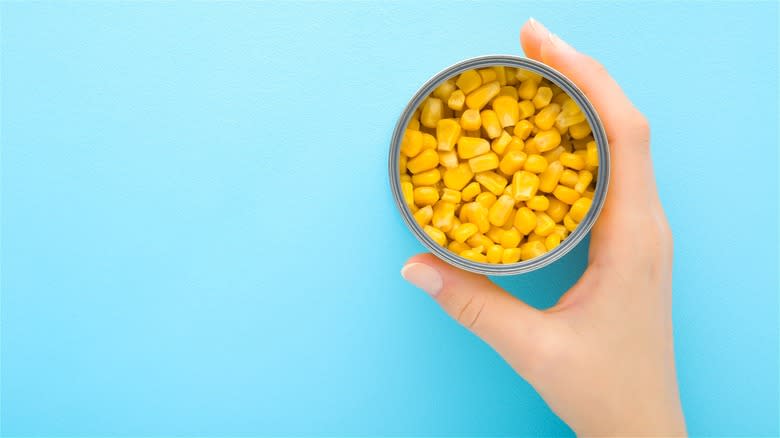
People usually assume that because canned goods preserve ingredients for long periods, any can they reach for will be fine. But you have to bear in mind that something being non-perishable doesn't mean it will last forever. Instead, this term means that such food items can be stored away for a long time before being eaten, especially when compared to fresh ingredients. So, always check the expiration date on your canned corn before tearing them open.
In addition, take a look at the can's condition. Dents that are light and superficial mean that you can still consume the corn inside. However, if you find serious dents, bulging, or leaks, these are red flags that mean that a can may contain Clostridium botulinum, the bacteria that causes botulism food poisoning (which can be fatal). Always err on the side of caution and throw the cans out -- even if the expiration date is still in the future. Don't even try to taste the liquid, as you can ingest the toxin and suffer deadly effects.
Mistake: Forgetting To Drain And Rinse It
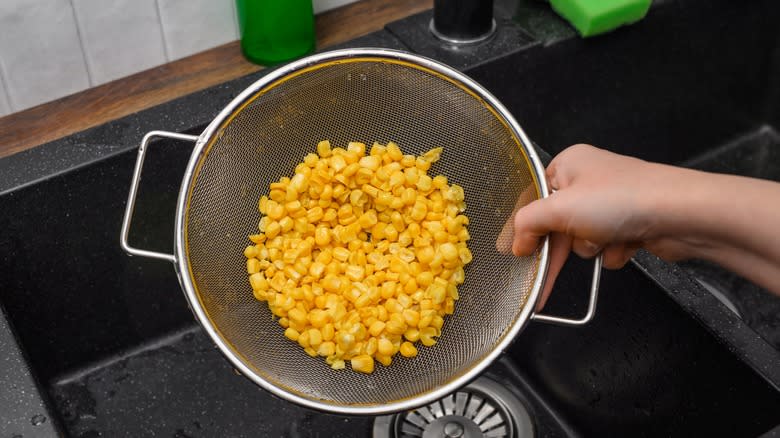
The canning process requires corn kernels to sit in a brine, which is basically salted water. And, according to the University of Rochester Medical Center, one cup of drained, canned corn already has around 350 milligrams of sodium in it. So, if you include the brine in your recipe, the amount of sodium you're going to consume is even higher.
The World Health Organization reports that adults should aim for under 2,000 milligrams of sodium per day. And just one cup of drained, canned corn hits 17.5% of that allowance already. One cup isn't very large either, so chances are that you're eating more than that, and may be consuming as much as 50% of your daily sodium allowance in one serving.
Luckily, you can keep your salt intake down by draining and rinsing canned corn. This is especially helpful at eliminating more sodium. Plus, it can get rid of that metallic taste that the kernels can have sometimes. Ultimately, it's a win-win situation to take this extra step when using canned corn.
Mistake: Ignoring The Can's Liquid
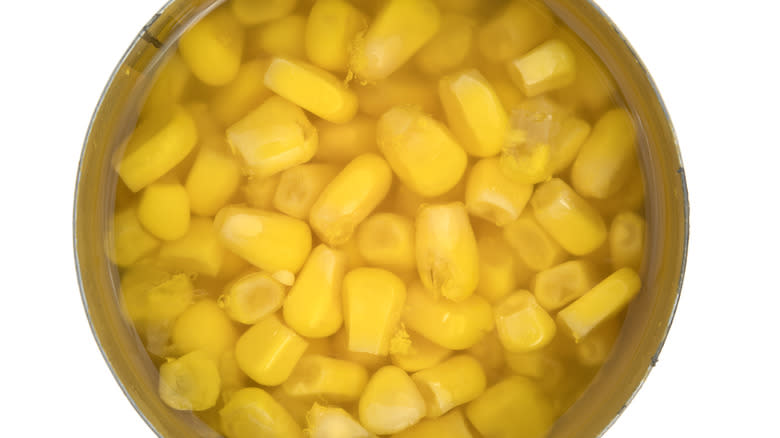
Yes, we've just said you should drain and rinse canned corn. However, that doesn't automatically mean you should toss the brine! We'd call it a sort of liquid gold, since it contains the essence of corn. After the kernels have sat in the brine, it will be flavored with the vegetable's unique taste and smell.
The next time you crack open a can of corn, you should set aside the drained liquid for other recipes. Because the salt content is relatively high, it's better diluted in things like soups or stews. For example, you can use it alongside the kernels in a light yet refreshing corn soup. Or you can pour it into your Instant Pot chicken tortilla soup to add a little sweetness and saltiness. When putting together recipes like these, you won't have to drain the can -- simply pour all the contents in for an easy and quick meal.
Mistake: Not Adjusting Recipes When Using Canned Corn
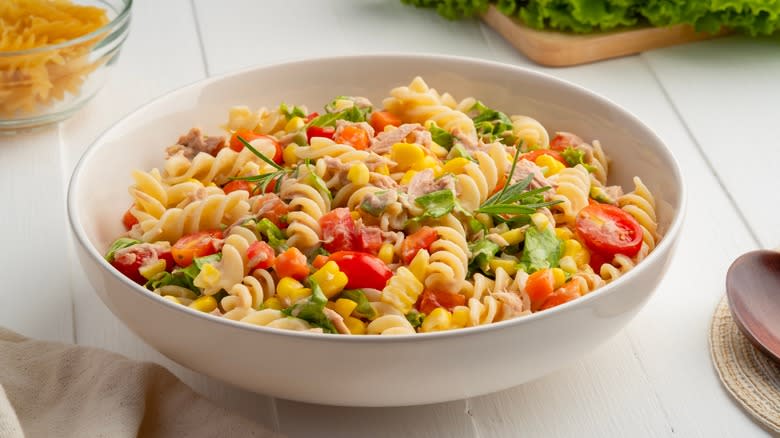
You probably love canned corn because it tastes just as good as fresh corn. This means you can substitute it for fresh corn in recipes, right? Sort of. The kernels will have the same sweetness and crunchy texture, but because they're canned in brine, they'll be saltier. Draining and rinsing the canned corn will help with the sodium content, but you can't take it out completely. Plus, there's additional sugar in the brine too.
This means that, while you can substitute fresh corn with canned corn in most recipes, you'll have to make adjustments. Otherwise, the end result can be either too sweet or too salty. The best way to go about this is to start with no added sugar or salt at all. Taste as you go, and add each ingredient slowly. For instance, if you're making an All-American macaroni salad recipe and want to use canned corn in it, mix all the ingredients together -- minus the salt and sugar. Have a nibble, sprinkle some seasoning in if needed, and repeat.
Mistake: Overcooking It
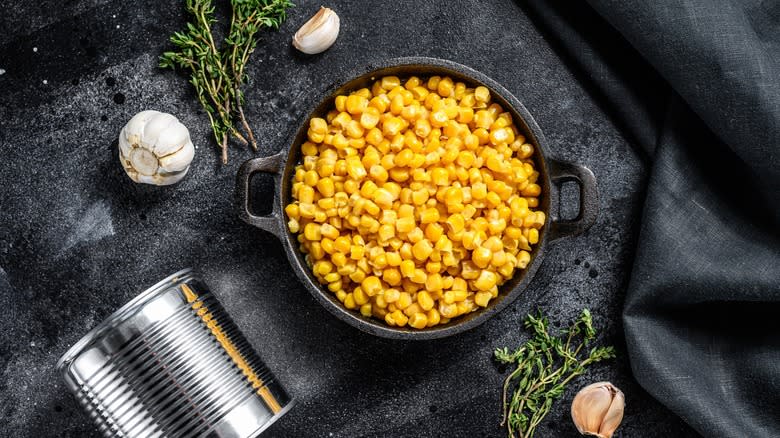
What's important to know is that canned corn is already cooked. During the canning process, it's blanched, which cooks it and preserves its flavor. This is why you can pop a can open and immediately eat the kernels with a spoon!
Many people forget about this fact though, and when they add canned corn into their dishes, they overcook it. We understand that you don't want cold kernels in the middle of your hot meal, but there's such a thing as overdoing it. Let's say you're making our quick chicken pot pie, and you're adding canned corn for extra flavor. You will want to put it in the filling at the last second to ensure it doesn't become mushy and gross. The same goes for any stovetop recipes -- stir the kernels in a minute before you serve the food. This way, they're heated up, but not soft and flavorless.
Mistake: Forgetting To Season Canned Corn
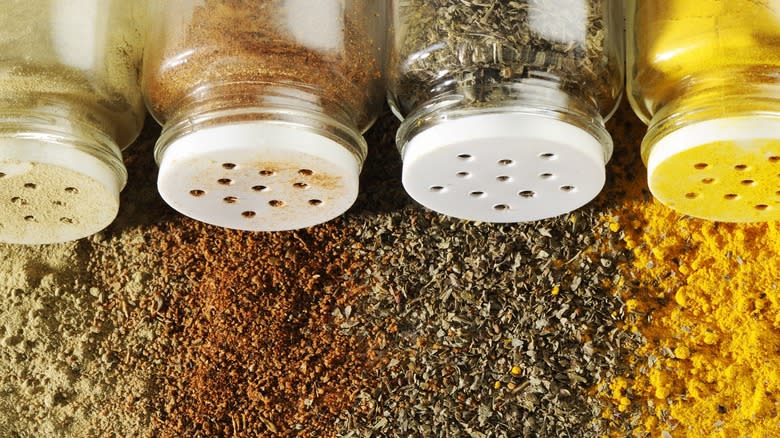
One of the biggest mistakes people make with canned corn is ignoring additional seasonings. It's true that the corn's already cooked, and that it comes packed in brine (which has salt and sometimes sugar, too). But you can unlock whole worlds of culinary adventures if you think outside the box!
For example, just adding a knob of butter to a cup of warmed-up canned corn instantly elevates the vegetable. Admittedly, this adds extra calories and fat, which isn't always ideal for those keeping a close eye on their health. But what's great about seasoning is the majority of your options can take canned corn to the next level without adding to the sodium, calorie, or fat content. If you go into your spice rack, choices like paprika, thyme, cumin, and plain black pepper are all excellent for enhancing those canned kernels. You can take a trip around the world without leaving your kitchen by focusing on spices that are prominently featured in each corner of the globe.
Mistake: Neglecting To Enhance Its Texture
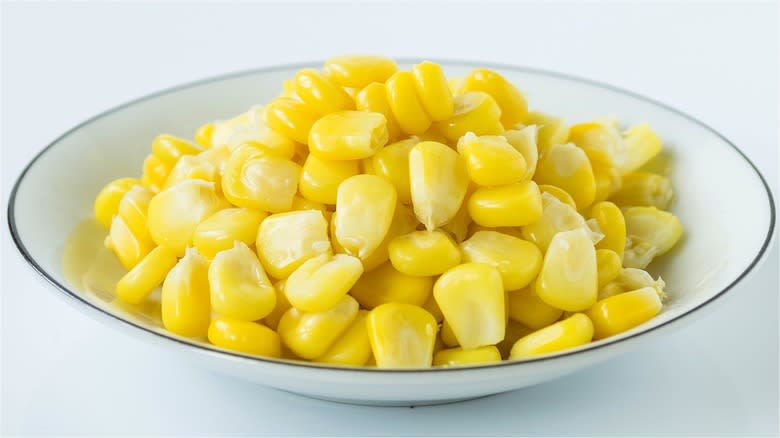
We'll fully admit that canned corn already has a fantastic, fresh-tasting crunch to it. Spoon some into your mouth, and you'd swear that you just cut the kernels from the cob. The bites are crisp, cold, and light-tasting, making canned corn amazing for summer dishes. The texture is perfect as-is, but as with many ingredients, you can always do more with it.
To get a harder, crunchier texture, you can roast the canned corn. We've got an outstanding oven-roasted corn recipe that's super simple -- excluding the corn, you only need butter, thyme, and salt. Follow the same steps as you would with fresh corn on the cob, but keep a close eye on the oven, as the kernels will roast much quicker than ones bunched up on a cob. Another idea is to sauté the canned corn. Stir frequently and diligently, and you'll be rewarded with browning and caramelization. Not only will this make the kernels crisper, but it'll also provide a slightly sweet and nutty flavor to your dish.
Mistake: Serving It Cold
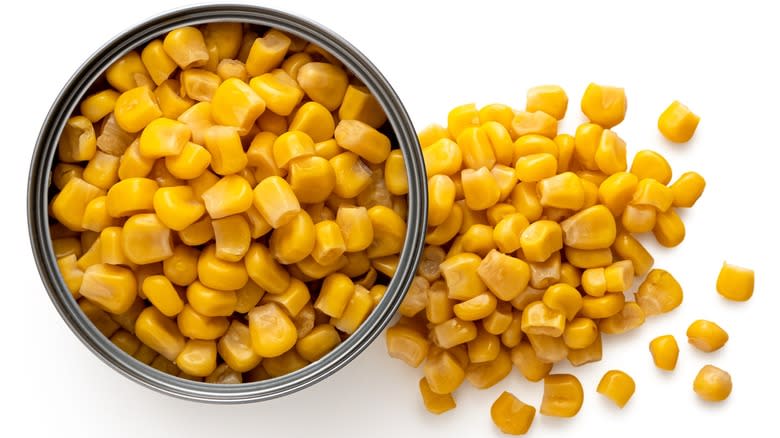
You can definitely eat canned corn straight from the can without heating it up. And you can even use it cold in certain situations, such as in our easy cowboy caviar recipe. That's the beauty of this ingredient -- open a can, and you can instantly make a meal out of it.
However, you'll find that in the majority of recipes, canned corn is better warm. Not only does the heat enhance the flavor, but also the texture. Plus, there's nothing worse than digging into a hot meal, only to get a bite of cold kernels. So do yourself a favor and heat the canned corn up before using it. You can do this by dumping the can into a microwave-safe bowl and microwaving it for 30 seconds before stirring it into your pot. Or, you can stir the can's contents directly into what's cooking a few minutes before it's done.
Mistake: Only Using Canned Corn For Side Dishes
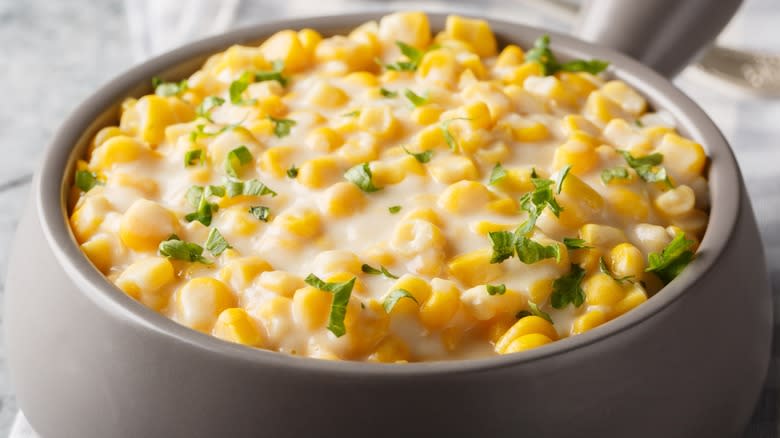
Most people think that canned corn can only be served as a side dish. If you're feeling fancy, you might even whip up some creamed corn to put on the table. That's still not very creative, and you're still serving canned corn as a measly side. This ingredient deserves to be front and center!
There are whole recipe books waiting out there that enable you to transform canned corn into a main course. For instance, you can mix them up into corn fritters, which are similar to hush puppies. These work great as finger foods for lunch. Or, you can try this cheesy corn casserole recipe that's easy to make. Just mix up the filling, add to a baking dish, sprinkle with cheese, then bake for 40 minutes. It'll have your loved ones begging for seconds. Other possibilities include spicy salsas, warm soups, and fresh salads.
Mistake: Not Using It To Make Desserts
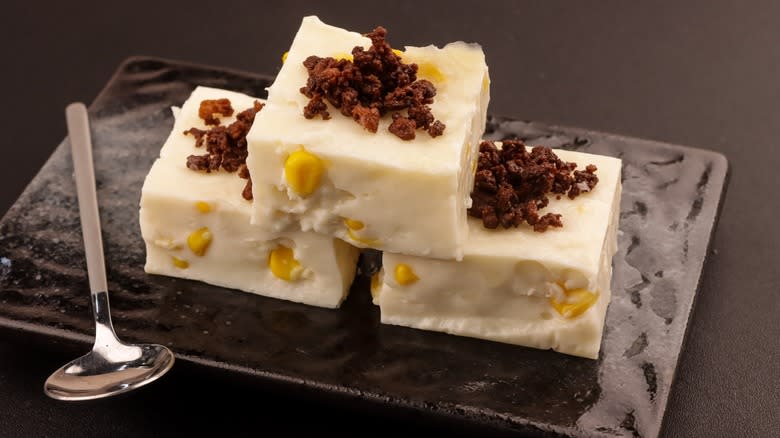
When you think of corn, you probably think of savory dishes. Pictures of corn on the cob, corn chowder, and salsa dance through your head. But who says corn should only exist in these types of dishes? It may sound strange that this ingredient can be used for desserts, but trust us, it works. I mean, we have cornbread, which is definitely on the sweeter side. It works because this veggie has sweet goodness in each kernel, and its texture is nice too.
For a completely sweet and cake-like version of cornbread, try pastel de elote. In addition to the traditional cake ingredients, you'll blend canned corn or add it directly to the mix. Top it with caramel sauce for a saccharine touch. If you don't want to taste the individual kernels in your dessert, then you might be better off with things like ice cream or pudding. These recipes will require you to blend up the canned corn, resulting in smooth and tasty treats.
Read the original article on The Daily Meal.

